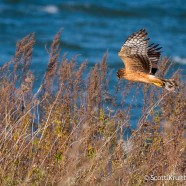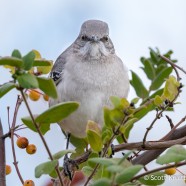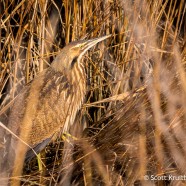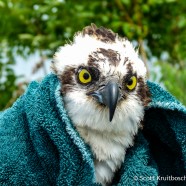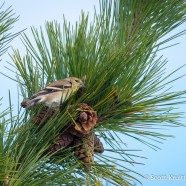Winter Raptor Surveys Commence
With the calendar flipping into December we have now entered the winter raptor survey season! The Roger Tory Peterson Institute of Natural History will be assisting the New York State Department of Environmental Conservation for a third season of wintering raptor surveys in Chautauqua County in 2015-2016. The primary focus of these surveys is to determine where Short-eared Owls (Asio flammeus), ‘endangered’ in New York, and Northern Harriers (Circus cyaneus), ‘threatened’ in New York, are spending the winter season to roost and feed. We need your help, too! From December through March please...
Read MoreNorthern Mockingbird
This is one small bird with a frightening gaze! Watch out for the Northern Mockingbirds (Mimus polyglottos), folks…even when they are not defending a nest and zooming at your head they certainly give off a scary vibe. I would not turn my back to this one. As long as it has some tasty food like those berries and some unfrozen water it will be content to stick out the winter in a given location. I don’t care what I’m imagining, that is not a happy expression…but I am happy they are such a successful species advancing northward in their territory. Scott Kruitbosch...
Read MoreAmerican Bittern
This is the American Bittern (Botaurus lentiginosus), a stupendously cryptic and sensationally camouflaged heron species of freshwater and brackish marshes and wetlands. During late fall and winter they can be infrequently found moving south to warmer or coastal areas where the water does not freeze. Even their movements are meant to blend in perfectly to surrounding vegetation, stalking prey including fish, amphibians, insects, mammals, reptiles, and more. The American Bittern was once a terror in the night to many early American settlers who lived in coastal regions. Its pumping, gurgling,...
Read MoreFighting Osprey
I recently came across this old image of mine and had to share the story with everyone. RTPI President Twan Leenders and I captured this injured female Osprey (Pandion haliaetus) on June 28, 2010 after she was reported by concerned citizens as unable to fly on Bridgeport, Connecticut’s Pleasure Beach near her nest site. She had dislocated her left shoulder when being battered by a tornadic supercell thunderstorm a couple days earlier. The storm moved over the barrier beach after a tornado had touched down in the city minutes earlier. She was successfully rehabilitated and later...
Read MoreAmerican Goldfinch
This American Goldfinch (Spinus tristis) is still molting into its wintering look while enjoying the pine cones on this black pine tree. Though not native, black pines are a huge fall magnet for birds, and this one tree alone also had Black-capped Chickadee, Song Sparrow, Dark-eyed Junco, and White-throated Sparrow in it. Will we be seeing conifers filled with White-winged and Red Crossbills soon? Or at least more Pine Siskins and Common Redpolls in the area? Perhaps so judging by how many American Goldfinch seem to have moved recently, and the reports of other finches to our north.
Read More



